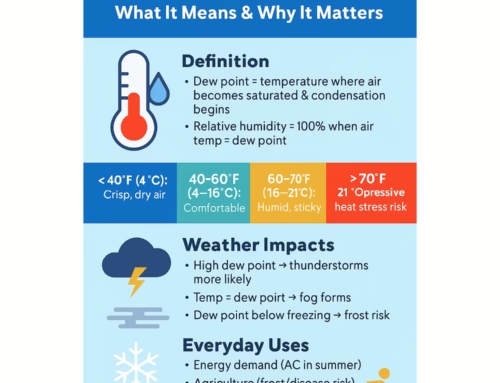As temperatures rise, especially during the summer months, you might often hear weather reports mentioning the “heat index.”
But what exactly is the heat index, how is it calculated, and why is it crucial for your health?
Let’s dive into these questions to better understand this important meteorological measure.
What is the Heat Index?
The heat index, sometimes referred to as the “apparent temperature,” is a measure that combines air temperature and relative humidity to determine how hot it feels to the human body.
Unlike the actual air temperature, the heat index provides a more accurate representation of the perceived temperature, taking into account the effects of humidity on the body’s ability to cool itself.
When the body gets too hot, it sweats to cool down. The evaporation of sweat from the skin removes heat from the body, effectively lowering its temperature. However, high humidity levels can hinder this process because the air is already saturated with moisture, making it harder for sweat to evaporate.
As a result, the body feels hotter than the actual air temperature suggests.
How is the Heat Index Calculated?
The heat index is calculated using a complex formula that incorporates both the air temperature and the relative humidity. The basic version which is valid for temperatures between 26 °C and 44 °C AND a relative humidity over 13% is:
HI = -8.785 + (1.611*T) + (2.339*RH) – (0.146*T*RH) – (0.01231*T²) – (0.01642*RH²) + (0.002212*T²*RH) – (0.0007255*T*RH²) – (0.000003582*T²*RH²)
Where T represents temperature in °C and RH is the relative humidity as a %.
So for example if the temperature is 32C and the humidity is 65% this gives a Heat Index of 38C
Or we have a simple to use calculator below – which is one of many weather related calculators we have available here
We also have a table below to show the various health effects associated with the different levels of heat index
How Does the Heat Index Impact your Health?
Here’s a couple of tables based on the US National Weather Service formulas which have been prepared by isglobal.org


The heat index is a vital tool for understanding how hot it feels outside, taking into account both temperature and humidity.
By knowing the heat index, you can better prepare for hot weather, protect yourself from heat-related illnesses, and make informed decisions about outdoor activities.
Always pay attention to heat advisories and take necessary precautions to stay safe during periods of high heat.
Stay cool and stay safe!
If you enjoyed reading this, the please explore our other articles below:



